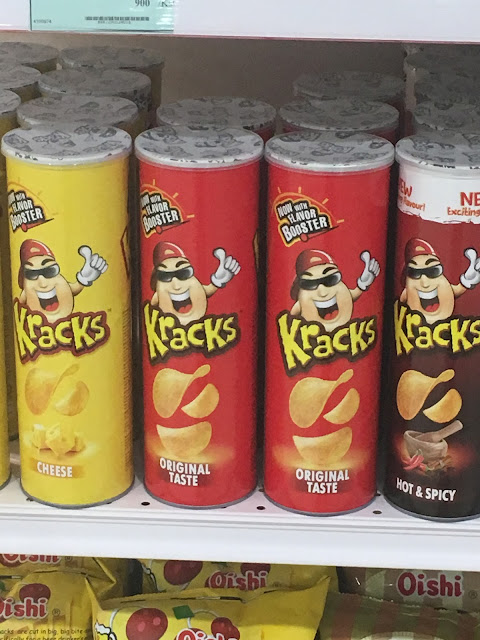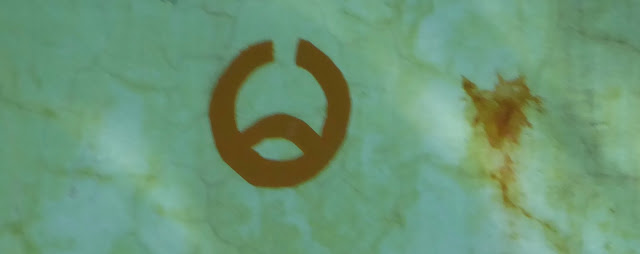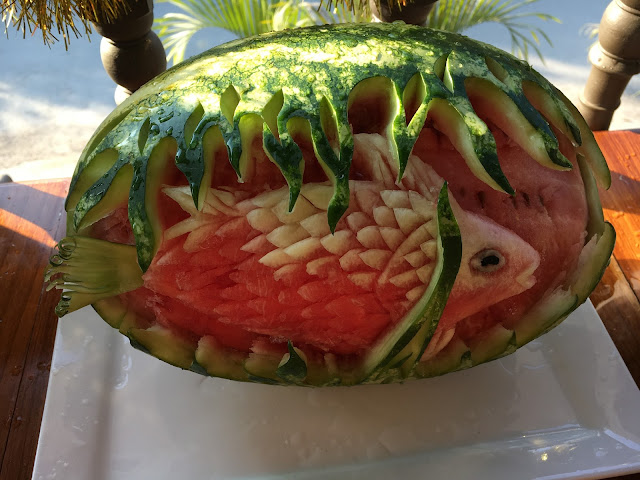We’ve decided to hire a car and driver to take us on our
journey down to Southern Myanmar. Mr Oo
is a steady driver who speaks good English and as events will prove, is very
knowledgeable of the surrounding area.
Taukkyan War Cemetery is immaculately maintained by the
Commonwealth War Graves Commission and contains the graves of 6,374 allied soldiers
who died in Burma and Assam during World War 2. A memorial commemorates almost
27,000 soldiers who died with no known graves.
You don’t immediately appreciate the wide diversity of race
and creed that are included under ‘Allied’ soldier but included amongst the
tidy headstones are soldiers from Asia, Africa and Australia. There are Christians, Jews and Moslems all
buried here and who gave their lives fighting the Japanese.
Occasionally, bodies from the war are still recovered and
interred here. The simple headstones
contain name, age, regiment, rank and date of death. A regimental badge is also on the stone
although sadly, many of these regiments have also passed into history. There are 6 (maybe 7) VC winners here and we
see two of their graves.
Travelling south we pass Payas and temples at every turn. The
temperature in this part of Myanmar is much warmer and each time we get out of
our air conditioned car we are hit by the heat.
We lunch at a traditional Burma lunch station. It’s
cafeteria style and you point at your choice of curry which is served with rice
and a wide range of accompaniments including soup, fresh vegetables, hot chilli
paste, fried bamboo shoots, tamarind and something which even after tasting,
defies identification. The Burmese cooking
process known as s’i pyan sees all the ingredients cooked together until the
oil separates and results in mild flavours.
All the curries are swimming in fat but the oil prevents flies and dust
getting at the meat which is tender and tastes surprisingly good.


The area is full of paddy fields and many other vegetables are
grown in the plains including water melon, pomelo and a seasonal delicacy
called iced potatoes. We stop to sample the Iced Potatoes which to all extent
resemble an unwashed spud that can be eaten without cooking. It’s peeled by hand, and when washed resembles
a peeled spud. When eaten? It tastes like a watery spud. A couple of bites is enough and Mr Oo happily
finishes off the remainder.
 |
| Iced potato - looks like a spud, feels like a spud and funnily enough tastes like a spud |
As we leave behind the lowlands and head to the hills we
pass miles and miles of rubber plantations with the trees planted in straight
lines that go on for ever. We pass cashew
and peanuts plantations all laid by hand.
Eventually we cross the Sittang river and after a mammoth
drive we arrive in Mawlamyine.

There’s a busy night market with plenty of stalls selling ‘picky’
food on sticks. There is a varied
selection and each stall holder has their particular delicacy and are eager to
persuade us to try. We decline the
overtures from the offal stall which is very popular with the locals who appear
drawn by the piles of intestine, stomach and other inside bits. The lady at the next stall specialises in feet
- duck, chicken and hoof whilst the offer of trying chicken anus is tempting
but passed. The fish looked amazing but eventually
we settle on what we think is likely to give us the shortest time off the
toilet with what looks like chicken on sticks, mushrooms , tiny boiled eggs and
some odd looking sausages which we are assures are pork! We hand our plate of goodies over for
barbecuing and settle down in the crowd. Our attempts to describe a bottle of
water are somehow interpreted as a request for beer and a bottle of Myanmar accompanies
our meal - so win win (and no ill after-effects).
 |
| This guy is offaly popular - but not with us |
 |
| I didn't think you got piranha in these waters |
 |
| Some of this is edible and we ate some of this - although not all of the items eaten were edible! |
About 30 miles south of Mawlamyine is the Thanbyuzayat War Cemetery.
The cemetery contains 3,771 graves of
allied POWS who died working on the ‘Death Railway’. After the war the bodies were recovered from
the trackside graves along the route and reinterred here. The deaths all occurred in the period May
1942 to February 1943 and there are few officers buried here as the work was
carried out by other ranks.
The cemetery is quiet and well maintained by the CWGC. Whilst we were there a coach of Australians were
placing flowers on many of the Australian graves – some were clearly looking to
honour a specific grave whilst others took a single flower to each of the
unmarked graves which was very touching.
We chatted to one of the CWCG super-intendants who had a
good knowledge of the interred. He told
us that in one case, a woman had written every year to have a wreath placed on
her husband’s grave. Over time her
written note had become more spidery as age took its toll until the request
finally stopped coming.
The Death Railway War Museum in the nearby town is best
avoided. For a $5 admission you get to
see a train, a bit of track where the death railway started that may or maybe
not from the death railway and a few photographs. There is a decent diorama in the main hall
but little by way of exhibits, detail or explanation and the noisy local
visitors who shriek and scream whilst posing for selfies means that there is
little to commend it.



The south seems to be the location for gigantic Buddhas. At Win Sein Yattanah Hill there is a seated Buddha
constructed in concrete that is over 100 feet tall and dominates the
hillside. We venture inside which is
like a building site with bags of concrete, reinforcing steel and tiles lying
in inches of dust. We climb the
unfinished stairs and on each floor there are hoards of small Buddhas huddled
together to avoid the construction works.
John continues up a further 200 steps and numerous unfinished floors
passing the window in Buddha’s navel before reaching his nose where the way is
blocked – what size of Vic inhaler would be needed to unblock the way is
unknown.
 |
| Health and Safety - I think not! |
 |
| Small buddhas huddle together to avoid being trampled by workmen |
On the next hillside is a larger, reclining Buddha. It’s 560ft long and one of the biggest in the
world. Facing it is an even larger unfinished
reclining Buddha. We make a donation and
buy a couple of tiles to help speed the process.
 |
| One of the world's biggest Buddhas |
 |
| This partly constructed Buddha is strangely haunting |
 |
| There are always stairs - steep and plenty of them |
 |
| A happy monk takes our donations |
Inside, and up steep steps (always up steep steps) we walk through
an assortment of scenes that we assume depict events from Buddha’s
journey. The story telling doesn’t make much
sense to us and in places the life sized models illustrate gruesome images of
hell and damnation which Dante would have been proud of.
 |
| That's got to sting! |
 |
| Pneumatic women tempt the prince |
The entrance to this site is guarded by 500 concrete monks all with their alms bowls out and stretching down the hillside into the distance.
 |
| The monks disappear into the distance |
 |
| as far as the eye can see |
For some reason the gateway to the temple contains stainless
steel birds that glare down on the visitors in an intimidating, hypnotic
fashion.
 |
| Look into my eyes ............. |
We finish our day at a couple of the temples overlooking
Mawlamyine. Cats seem to prefer the
temples presumably because there are fewer dogs. We watch the the sun go down accompanied by
the chanting of the monks.
 |
| He's at it again - he just can't resist banging on the bell |
The Golden Rock is a major draw for Burmese and on
Independence Day, we join the locals on our own pilgrimage. Although the journey should only take a
couple of hours Mr Oo has other surprises in store.
Around the town of Hpa-an are a number of limestone caves
set amidst vibrant paddy fields and small rivers and reached via dusty red clay
paths. Saddan Cave is breath-taking. The stadium sized cave is full of buddhas and we pass barefooted beside gold pagodas and clay carvings. Beyond the temple, the cave continues and we follow the well worn path through gigantic, dimly lit caverns. There are huge stalactites, petrified mud and walls of glimmering crystal which reflect our torch light. Above, the piercing shrieks of thousands of bats fill the air and when disturbed by our beam of light they drop from the roof to swarm into a cloud above our heads. The downside of course is that bat excrement levels increase.
 |
| Clive celebrates 100 years as gatekeeper of the cave with a crafty fag |
 |
| Huge stalagmites the size of a house |
 |
| The downside of disturbing bats at roost is an increase in bat poo raining down |
In places, the paths are steep and slippy (damp clay + bat
excrement = treacherous). I quickly
replace my shoes but John continues barefoot and the mud oozes between his toes. Emerging into the
sunlight at the far end of the cave there’s a large lake and we are met by boat
men who row us under the mountain and back to our start point.
 |
| Clay or bat poo - you figure it out - John says the soles of his feet are now very soft |
The smaller Kawgun cave dates back to the 7th
Century and consists of thousands of tiny clay buddhas stuck to the walls and
ceilings. Inside there are more buddhas
and wall carvings. It is closely guarded
by monkeys and the locals queue up to buy food to feed them. The monkeys know they are on to a good thing
and happily pose for photos whilst gently accepting nuts and sweetcorn from the
children.
 |
| A monkey |
 |
| A monk |
Although sunrise is said to be the best time to visit the
Golden Rock we decide on a later visit. Kyaiktiyo town is merely a staging post
for the Golden Rock. Cars are not
permitted on the road up the mountain and apart from walking (I don’t think so)
the only way up the seven mile, hair-pinned race track is via trucks that are
converted to carry passenger along the seven-mile track.
The town is full of trucks each of which carries about 45
passengers on padded wooden slats that pass for seats. Courtesy of Mr Oo’s intervention, we are
shoe-horned in to a waiting truck that already appears full. The locals reluctantly budge up and we slide
in. For just 2000 Kyatt you can travel up
the 7 mile race track at a ridiculous speed enjoying breath-taking views of sheer
drops and tight narrow bends whilst packed sardine-like in a noisy open sided
truck along with 40 other terrified passengers.
I wasn’t this scared riding Oblivion at Alton Towers.
 |
| I think having a monk aboard is a bit of an insurance policy |
 |
| Here we go! |
At the top we have to fight our way out of the truck whilst
other passengers clamour aboard looking to secure seats for the return journey.
 |
| We exit the truck like a landing craft at Omaha beach on D Day |
Thousands of pilgrims make this journey every year and they
believe that the sacred rock brings you closer to the spirits who can grant you
your wishes. Many people sleep in the open at the top and have come prepared
with food and blankets. Whole extended families
are camped out and about amongst the monks and nuns who vie for donations.
 |
| Stretcher bearers |
I was wearing shorts and got busted by the fashion police. After paying a small fortune (almost £4) I bought a lunghi to cover my knees but struggled to get it on. Luckily a member of the fashion police came to my aid and dressed me properly.
 |
All tucked in and ready to go
|
The Golden Rock has a number of mimic rocks dotted about but
the scale of the giant, gilded rock is still awesome. The precariously balance boulder is coated in
gold and topped with a small stupa. It
sits, precariously balanced on the edge of a cliff seemingly defying
gravity. Legend has it that this is due
to a precisely placed Buddha hair contained in the stupa. I tend to think that balance is maintained by
the tons of gold leaf applied by devotees at 1,500 kyatt per inch square sheet
and possibly a dollop of Two Rhinos Cement.
Although there are crowds here the atmosphere is
party-like. Locals poses for photos, the
hawkers sell food and balloons and porters carry huge loads of luggage to and
from the mountain top hotels. For a
price you can even be carried on a stretcher to the Rock itself.
 |
| Burmese tammy |
 |
| Nice socks (and hat) |
Coming down from the Rock I again put my London commuting
skills to good use. There is a small
elevated platform so that passengers can climb aboard in orderly fashion and a
small queue forms with me near the front.
Empty truck pulls in and a crowd swarms aboard the truck from all angles
chucking children and luggage into any available space. I’m taken by surprise
and the truck is almost full before I dive in and push to create space for John
and myself. An old granny is tossed half
in over the side and into my lap. John
disentangles her leg and we manoeuvre her into a non existent space where she
is eventually reunited with her shoes which follow.
 |
| We secure our places and wedged in place we head off downhill |
 |
| Chatting to the granny we hoiked on board |
 |
| As if the truck wasn't bad enough I now have to travel in a sidecar |
On our way back to Yangoon, Mr Oo stops to show us
interesting aspects of Myanmar life.
Our first stop is to the Mayathebate Temple to see beautiful
buddha made completely from woven Bamboo. I think that it is one of the most impressive I’ve
seen.
Afterwards, we stop to see bamboo garden furniture being
made and it’s amazing what you can knock up with a sharp knife, a saw and an electric drill. The chairs are sold for between £1 and £2
each
 |
| All for sale at ridiculous prices - the chairs are surprisingly comfy and start at about £1 |
The dried fish stalls will last long in the nostrils. Thousands of snake head fish are processed at
the roadside before being dried out on large racks. There are many stalls knocking out the fish
which are very popular but probably an acquired taste.
 |
| Open air fish prep - descale, chop, gut and splay |
 |
| Someone must be eating all this fish |
And finally, we visited a rice factory which operates in a small shack
with the most impressive cobwebs I’ve seen and which probably date back
centuries.
 |
| Now that's what I call cobwebs - our house probably looks like this now! |
We’re now back in Yangon for a couple of days before heading
on to Vietnam. We might get another blog
on here because we have a couple more things planned. See you soon.

























































































































